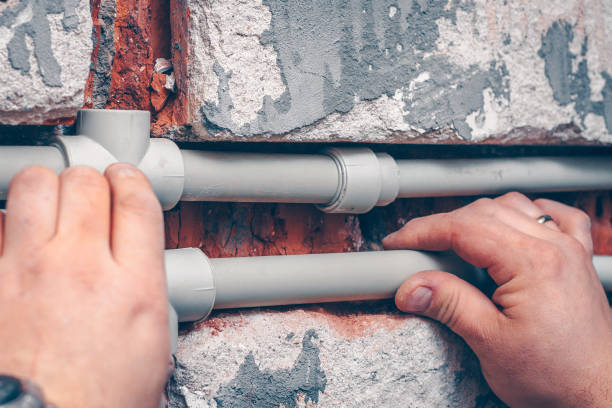One of the most important aspects of any plumbing job is installing the pipe properly. This not only ensures that the job will be done correctly, but it also helps to prevent any future problems. Whether it’s drainage system or drinking safe water, pipes are an essential at any situation. They transport water, waste, and other liquids and gases from one place to another. It provides a safe and secure method of transporting these materials and is an integral part of any plumbing system. They help ensure the water pressure is maintained and all system components are working correctly. Without pipes, plumbing would not be possible. Here are some tips on how to install the pipe properly.
Different Types of Pipes
Different types of pipes are available for various purposes. The most common type of pipe is PVC pipe, which are using for drainage. Other types of pipes include HDPE Pipes and galvanized pipes. A different type of pipes has its advantages and disadvantages.
- PVC pipe is the most common type because it is inexpensive and easy to install. However, PVC pipes are not as durable as other types of pipes and can break if not installed properly.
- PPRC Pipes are manufactured with high-grade raw materials and provide access to clean and safe drinking water. It is the perfect solution for the hot and cold supply and is best feasible in the commercial, residential, and industrial sectors.
- Copper pipe is more expensive than PVC pipe but is more durable. Copper pipes can last for many years if they are properly maintained.
- The stainless steel pipe is more expensive than the copper pipe but is more resistant to corrosion. Stainless steel pipes can last for many years if they are properly maintained.
- The galvanized pipe is less expensive than the stainless steel pipe but is more susceptible to corrosion. Galvanized pipes should be replaced every few years to prevent rusting.
The Importance of Pipe Installation in the Plumbing
The pipe is a vital component of your plumbing system, and it is important to know how to install it properly. You need to take a few steps to ensure that your pipe is installed correctly.
First, you need to measure the area where you will install the pipe. This will help you determine the correct size of pipe you need. Next, you need to cut the pipe to the right length. Once the pipe is cut, you need to sand down any rough edges so that it will fit snugly into the area you are installing.
After the pipe is cut and sanded, apply a sealant around the outside. It helps in create a watertight seal so that no leaks occur. Finally, you need to attach the pipe to the rest of your plumbing system using fittings and clamps. Make sure everything is tight so that no leaks occur.
By following these steps, you can be sure that your pipe is installed correctly and will not cause any problems.
How to Install the Pipe
Installing a pipe properly is important to ensure that it functions correctly and lasts for a long time. Here are some steps to take when installing a pipe:
- Cut the pipe to the correct length. If the pipe is too long, it will be difficult to install and could cause leaks. If the pipe is too short, it will not reach the desired location.
- Clean the ends of the pipe with a cloth or brush to remove any dirt or debris. This will help create a tight seal when the line is connected.
- Fit the pipe into the fitting or connector. Make sure it is enough tight itself to prevent from the leaking.
- Use clamps or tape to secure the connection if necessary. This will help prevent leaks and ensure that the relationship is strong.
- Test the connection by turning on the water supply and checking for leaks. If there are any leaks, tighten the connection or replace any damaged parts before using the pipe
Pros and Cons of Installing the Pipe
There are many factors to consider when deciding whether or not to install a pipe. The following are some pros and cons of installing the line:
Pros
- It helps you to save water.
- A line can help you reduce your water bill.
- It helps you conserve water.
- A pipe can help prevent flooding.
- A pipe can help reduce erosion.
- A pipe can help direct water away from your home or business.
Cons
- Installing a pipe requires excavation and digging.
- Installing a pipe may require a permit.
How to Know When It’s Time to Replace the Pipe
If you notice any water damage around the pipe, it’s probably time to replace it. Water damage can cause mold and mildew to grow, harming your health. If the pipe is leaking, that’s another sign that it needs to be replaced. You should also check the lines for rust or corrosion. If they’re in bad shape, it’s time for a new pipe.
To Summarize
Installing a pipe properly ensures it functions correctly and doesn’t leak. Our guide has helped you understand the steps to properly install a line. Remember to take your time and follow each step carefully to ensure a successful installation. If you have any questions, feel free to contact us; we’ll be happy to help.



